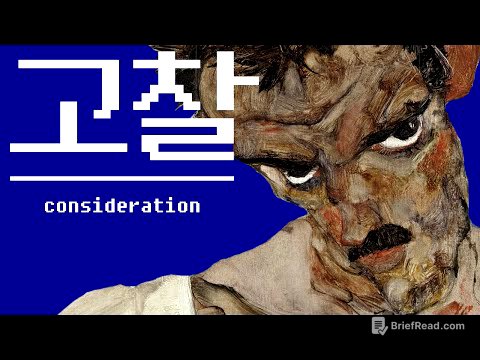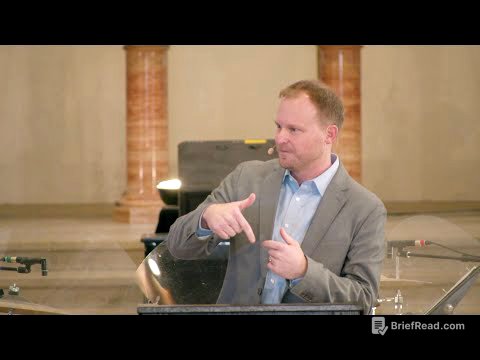TLDR;
This video explores the nature of the mind, its restlessness, and how to find inner peace by understanding and transcending it. It emphasizes that the mind is a collection of thoughts based on memory and habit, not our true nature. Key points include quieting the mind through observation without interference, understanding the roles of memory and imagination, and dealing with obsessive thoughts by not engaging with them. Ultimately, the video suggests that when the mind is silent, we can experience our true nature, which is awareness and presence.
- The mind is a bundle of thoughts, not your true self.
- Stillness is found by not engaging with the mind's movements.
- Peace comes from going beyond the mind, not just understanding it.
- Awareness remains when the mind is not active.
What is the mind? [0:06]
The mind is described as a collection of thoughts rooted in memory and habit, shaped by past experiences and conditioning. It's likened to a restless monkey, constantly jumping from one thought to another. The key takeaway is that the mind is not your true nature; instead, you are the witness observing the mind's activities.
Why does the mind keep moving? [0:54]
The mind's constant movement is driven by desire and fear. It continuously seeks pleasure and avoids pain, leading to a state of perpetual dissatisfaction. This restlessness stems from an ongoing search for something to hold onto, but true peace cannot be found in external pursuits.
Can the mind ever be still? [1:34]
Yes, the mind can become still when it loses interest. This happens when you stop giving attention to its movements, allowing it to quiet down on its own. Stillness isn't something you actively create but rather what remains when the mind is no longer entertained or engaged.
How do I quiet the mind? [2:13]
To quiet the mind, observe it without interfering. Allow thoughts to arise and pass without latching onto them. Focus your attention on the sense of "I am." By staying present with this sense of being, the mind naturally slows down.
Is the mind my enemy? [2:52]
The mind is not inherently evil, but identifying with it can lead to confusion and suffering. It should be used as a tool rather than being seen as your identity. The mind is meant to serve you, not to rule you.
What happens when the mind is silent? [3:34]
When the mind is silent, your true self shines through. Silence brings clarity and peace, allowing you to become aware of being without thought or movement. This state of pure awareness is your natural condition.
Can understanding alone bring peace? [4:17]
Understanding the mind is a starting point that prepares you for peace. However, true peace comes from going beyond the mind, not just understanding it. It involves letting go and ceasing the attempt to fix the mind.
What is the role of memory and imagination? [5:01]
Memory and imagination are components of the mind's activity. Memory ties you to the past, while imagination pulls you into the future. To transcend both, stay present with the "I am," which allows you to move beyond the constraints of past and future.
How do I deal with obsessive thoughts? [5:41]
Deal with obsessive thoughts by refusing to engage with them. Instead of resisting, simply don't feed them with your attention. Redirect your focus back to the sense of being. By remaining as the witness, the thoughts lose their power.
What remains when the mind is not active? [6:17]
When the mind is not active, what remains is awareness—silent, spacious, and untouched. In this state, there is no thinker, no doer, and no division, only pure Presence. This Presence is the Self.









